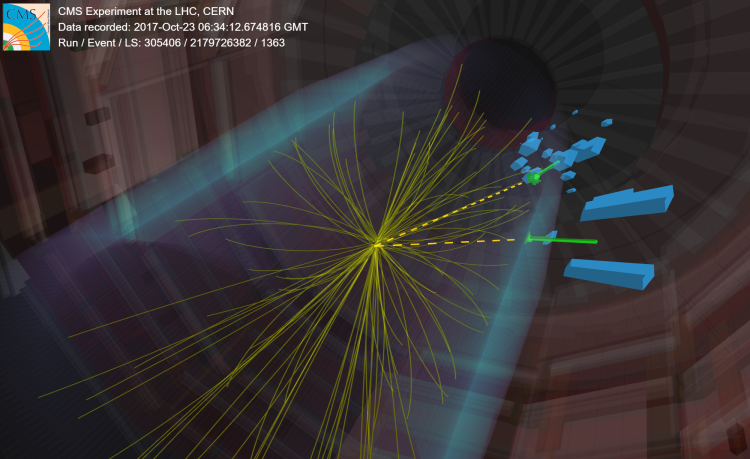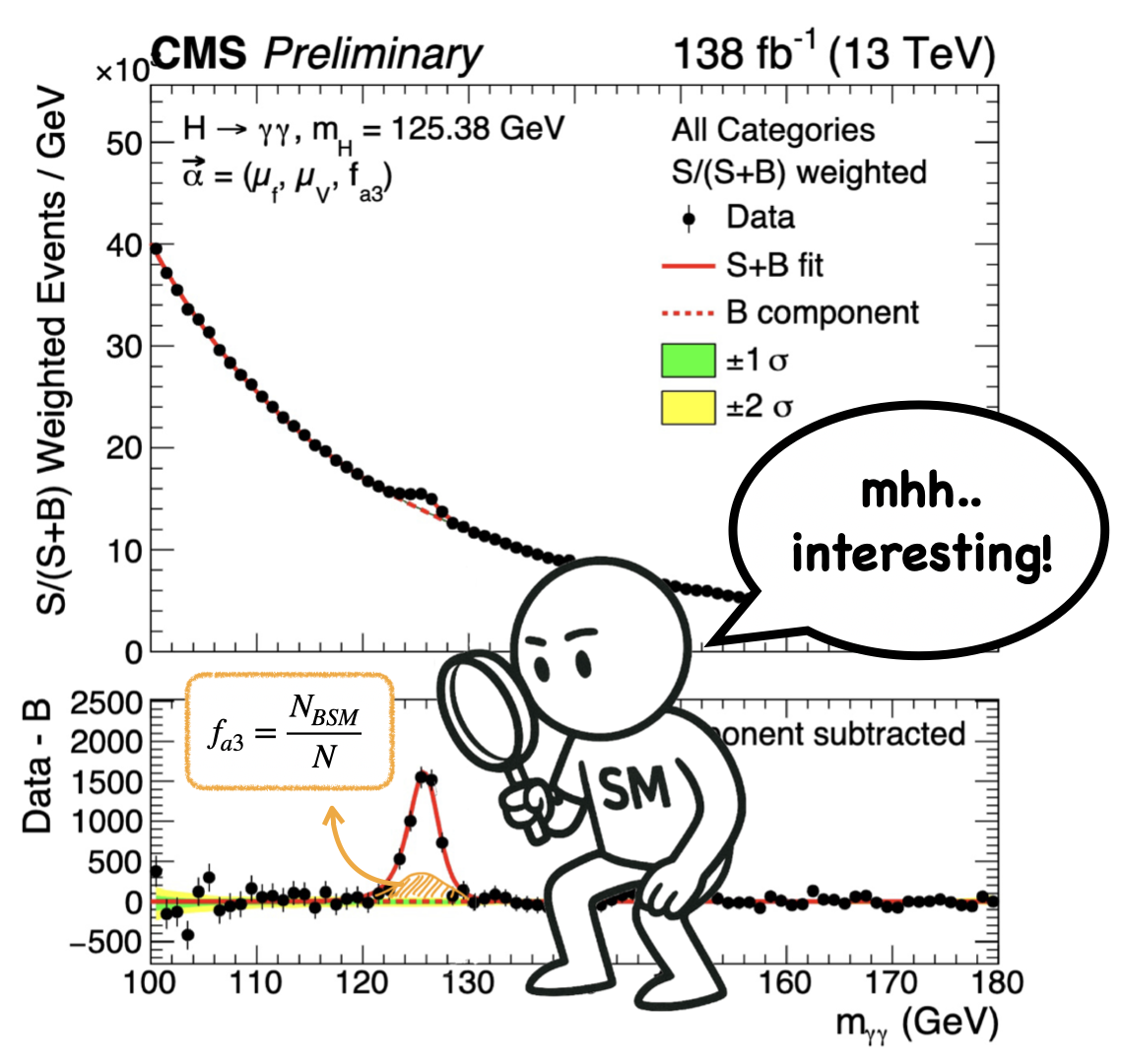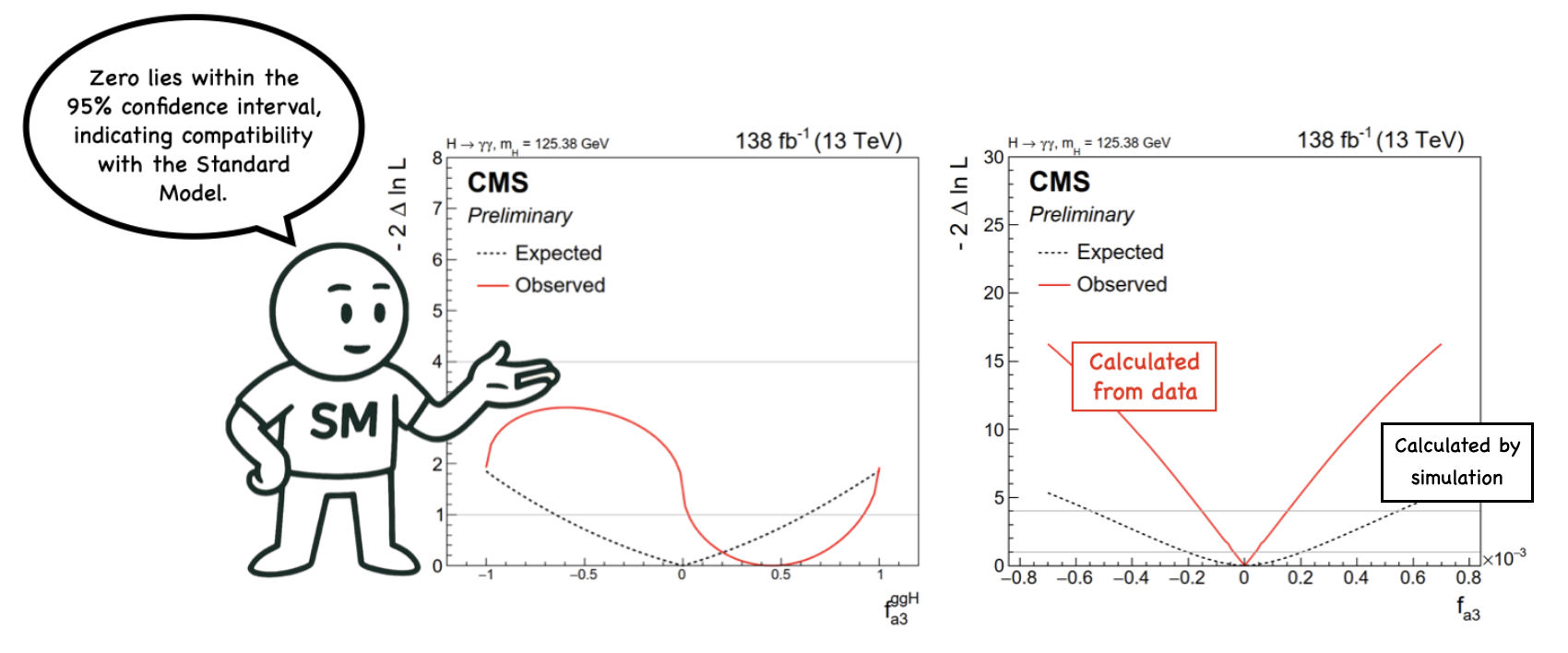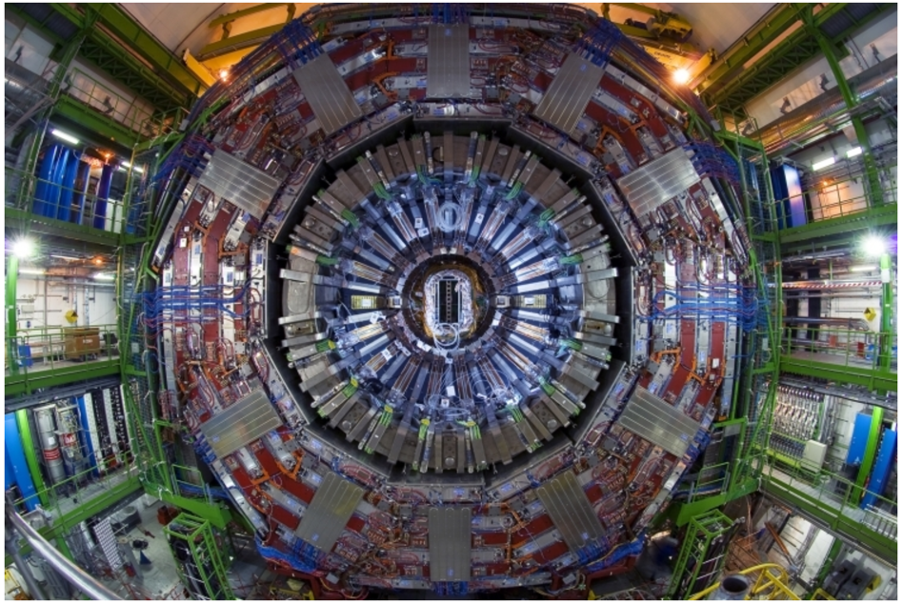
By observing decays of Higgs bosons into pairs of photons, the CMS experiment probes anomalous interactions, including those between Higgs bosons and W/Z bosons or gluons when all particles are replaced with their antiparticles and space is reflected.
You know that classic spy movie scene where our protagonist secretly follows someone to uncover the truth behind what’s really going on? We are proceeding with a similar mission, but this time we are following the Higgs boson! Our target is the Higgs boson that decays into two photons, and we’re watching closely for any “anomalous” interactions with other particles. If the data slightly differs from what the standard model predicts, it might hint at something new, like unknown particles, hidden forces, or even a new type of Higgs boson with CP-violating traits.
The Higgs boson, discovered in 2012 at the LHC, completed the last missing piece of the standard model. Since then, scientists have studied how the Higgs boson interacts with other particles. So far, everything agrees with the standard model, but with more data, we may be able to spot signs of new unknown phenomena that we know must be hiding somewhere.

Figure 1: Two types of Higgs boson production are studied for anomalous couplings. Left: Higgs bosons are produced via the fusion of vector (W or Z) bosons. Right: Higgs bosons are produced in the fusion of gluons. The processes are identified using the motion and energy of the final particles.
We study how the Higgs boson interacts with electroweak (W or Z) bosons (Figure 1, left) and with gluons (Figure 1, right), by focusing on its decay into two photons—a clean, well visible signature that appears as a bump in the photon-pair mass spectrum, thanks to the resolution of the CMS ECAL detector.
Instead of just counting Higgs boson events, we observe the motion and angles of the particles it produces in the final state, which will reveal anything unusual going on. The cross section prediction tells us how many Higgs-to-photon events we expect, and we aim to estimate how much of the Higgs-to-photon signal might come from an unusual effect (Figure 2). To spot these patterns, we use machine-learning tools like deep neural networks, which help us tell apart normal events from those that could hint at something beyond the standard model.
Like in any good spy story, this isn’t the end—it’s the setup for the sequel. Most results agree with the standard model, but some patterns, especially in Higgs-gluon interactions (Figure 3), keep the mystery alive. With more data from Run 3 and the High-Luminosity-LHC, we’ll sharpen our search. The Higgs boson might still be hiding secrets—clues to a deeper theory waiting to be uncovered.

Figure 2: The Higgs boson peak from photon pairs includes both normal events and potential ones with unusual interactions. The ratio between them is the key parameter of interest that we study to look for signs of new physics.

Figure 3: The figures show how we test different values of the effective cross section for possible CP-violating effects in Higgs boson interactions, with gluons (left) and electroweak bosons (right). By comparing CMS data with predictions, we can figure out how much room there is left for such unusual effects.
Written by: Federica De Riggi, Jahid Hossain, Rohith Saradhy, Xing-Fu Su, Antonio Vagnerini, for the CMS Collaboration
Edited by: Muhammad Ansar Iqbal
Read more about these results:
-
CMS Physics Analysis Summary (HIG-24-006): "Constraints on anomalous Higgs boson couplings to vector bosons and fermions in the γγ final state"
-
Display of collision events: CERN CDS
-
@CMSExperiment on social media: Bluesky - Facebook - Instagram - LinkedIn - TikTok - Twitter/X - YouTube

